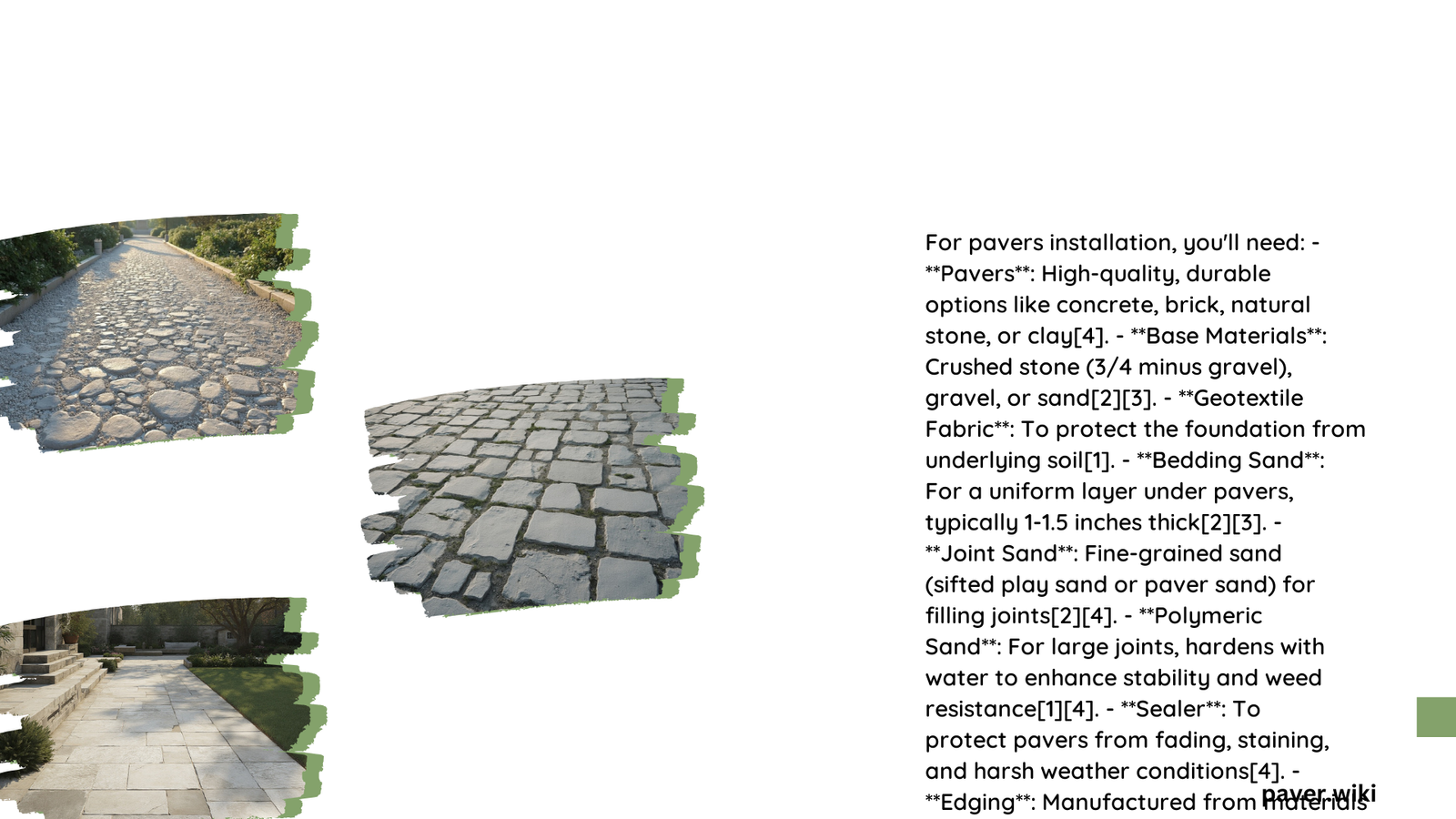Pavers installation materials are crucial components for creating durable and attractive outdoor spaces. These materials include base aggregates, bedding sand, joint sand, and adhesives. Proper selection and use of these materials ensure stability, longevity, and aesthetic appeal of paver installations. Understanding the specifications and applications of each material is essential for successful paver projects, whether for driveways, patios, or walkways.
What Are the Key Base Materials for Paver Installation?
The foundation of any paver installation lies in its base materials. These materials provide stability and drainage, crucial for the longevity of your paver project.
Crushed Stone or Gravel
- Depth: 4-8 inches, depending on soil type and application
- Recommended size: ¾ inch clean gravel
- Function: Provides a stable foundation and facilitates drainage
Compacted Aggregate
- Material: Modified crushed stone and sand or stone screenings
- Depth: 4-8 inches
- Compaction method: Plate compactor
- Purpose: Prevents shifting and settling of pavers
How Does Bedding Sand Contribute to Paver Stability?

Bedding sand is a critical layer that sits between the base material and the pavers themselves.
- Depth: Typically 1 inch
- Characteristics: Washed, clean, non-plastic, free from deleterious matter
- Function:
- Ensures proper interlock between pavers
- Allows for a smooth surface
- Aids in leveling pavers
What Is the Importance of Joint Sand in Paver Installation?
Joint sand fills the gaps between pavers, playing a crucial role in the overall stability and appearance of the installation.
Types of Joint Sand
- Regular sand (meeting ASTM C144 specifications)
- Polymeric sand (most commonly used)
Benefits of Polymeric Sand
- Locks pavers in place
- Prevents weed growth
- Resists erosion
- Adapts to soil movements (softens when wet, firms when dry)
Application Method
- Sweep sand into joints
- Compact using a plate compactor
- Avoid compaction within 3-6 feet of unrestrained edges
How Do Permeable Paver Materials Differ from Standard Materials?
Permeable paver installations require specific materials to facilitate drainage and reduce stormwater runoff.
Base Materials for Permeable Pavers
- Type: Porous gravel or crushed stone
- Depth: 6-12 inches (deeper than standard installations)
- Function: Allows water to pass through, reducing runoff
Environmental Benefits
- Reduces stormwater runoff
- Filters out pollutants
- Recharges groundwater
- Mitigates urban heat island effects
What Adhesive Options Are Available for Paver Installation?
Adhesives play a crucial role in certain paver installations, particularly for vertical applications or areas with heavy traffic.
Polyurethane Adhesives
- Coverage: 30-50 sq ft per gallon
- Application temperature: Above 70°F
- Application method: Brush, squeegee, or trowel
- Curing time: Few hours (full strength in 24 hours)
- Suitability: Flexible, suitable for most paver materials
Epoxy Adhesives
- Application: Mixed on-site, applied with specialized tools
- Curing time: Varies (few hours to several days)
- Suitability: Heavy-duty applications, high traffic areas
How Do Material Choices Impact Paver Installation Longevity?
The choice of materials significantly affects the durability and appearance of paver installations:
- Base materials: Proper compaction prevents settling and shifting
- Bedding sand: Ensures even surface and proper interlock
- Joint sand: Prevents weed growth and erosion
- Adhesives: Provide additional stability in challenging applications
By selecting high-quality materials and following proper installation techniques, you can ensure a long-lasting and attractive paver installation that enhances your outdoor space for years to come.
